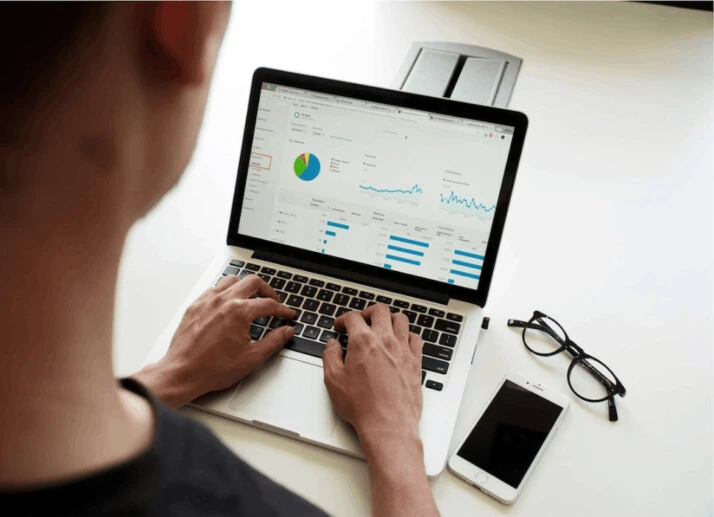A FAB (Features, Advantages, and Benefits) analysis is valuable in defining a product, service, or design. It gives a detailed account of all the features, benefits, and advantages a product offers, which helps to better understand its competitive edge compared to the alternatives. This article explores some compelling examples of FAB analysis.
A FAB analysis helps one compare a product to its alternatives in terms of features, advantages, and benefits. This helps the customer make decisions on where to spend their time and money.
The key objective of the FAB analysis is to capture the essence of a product or service while removing the complexities. This guide highlights some effective examples of FAB analysis.
What is FAB Analysis?
FAB Analysis is an evaluation technique typically used to determine the potential market size of an offering, its entrance market, essential rival products, and functional requirements. It is widely used in marketing, business strategy, and product design.
FAB (Features, Advantages, and Benefits) analysis is a technique of market development in which the potential customers’ motives for purchasing a product are identified and built into an analysis.
The features of a product are the physical attributes, like size, weight, and color. The advantage is something unique about the feature that adds to the product’s uniqueness and makes it stand out from the competition.
An advantage of a product could be its great size or sleek look. The benefits are the positives the product offers to the user, like its function and performance that drives the purchase decision.
FAB Analysis: Overview
FAB analysis is a market research tool that helps companies know what product elements to highlight to gain attention in an already saturated market. Below is a detailed explanation of the FAB analysis.
Features
The feature of a product is an essential aspect, compelling the customer to buy it. The features of a product are easily noticeable. They’re physical characteristics that are obvious once you look at the product, like how big it is and what it looks like.
Features are essential to the overall impact and success of a product. They help distinguish the product from others in the market. A product’s feature help customers understand its advantages and benefits. Since they’re easy to spot, you don’t need to do much with painting a mental picture or impression of the product.
Advantages
The advantage is the factor that makes a product better than the competitors’. It is what the feature does, i.e., the product’s positives. The advantages are descriptive and factual and don’t tell exactly how the product will impact the users’ life. For instance, a big-sized product might be advantageous to a customer interested in buying something that’ll fit an ample space. This feature can negatively affect other customers who prefer a small size.
The advantage of a product is a detailed description of its features. It provides the prospect with a deeper understanding of the product’s features. Advantages are circumstances and conditions that put a product in a superior or favorable position to others. The selling starts here; the journey of taking prospects through their purchase decision.
Benefits
The benefit of a product is the value it brings to the customers. It is the main reason the customer would choose the product over the other alternatives. As your business develops, you’ll need to keep track of the customers and understand why they’re buying your product.
A prospect might purchase a product based on its features and advantages. But, the benefits they will derive from the product will be an additional reason for them to continue buying and using it. While writing your FAB statement, the benefit should be something the potential customer will find most attractive. A benefit should thus be so appealing that the potential customer would want to pay for the product.
Leverage an emotional hook to help the user imagine the positive benefits the product will bring. Making very general claims like “a better experience” will only convey the vague idea of something the user doesn’t fully know.
Examples of FAB Analysis
A firm’s marketing team must understand and write a unique FAB statement that incorporates a product’s features, advantages, and benefits.
Writing an eye-catching FAB statement that catches a customer’s interest in a straightforward and unique way can be challenging. Here are some inspiring examples of FAB analysis.
1. Product: Children’s clothes
A FAB model for high-quality and exquisite children’s clothes will look like this.
a. Features: Organic cotton with non-toxic print and eco-bleached.
b. Advantages: Excellent fit, Perfect seams, non-allergenic, and tolerates repeated washing.
c. Benefits: Durable, quality, and long-lasting wear for children. The product doesn’t wear out after several washes.
2. Service: Psychologist
The FAB model for a psychologist offering counseling services and therapy sessions to people experiencing personal or emotional difficulties is as follows:
a. Features. Expert, caring, and friendly therapist, professional knowledgeable about mental and psychological health issues, trained in counseling and relational disorders.
b. Advantages: Discreet and confidential location, inviting premises, central location, and pleasant atmosphere.
c.Benefits: Less grief, no more risk of pain or anxiety, expert advice, professional counseling, personal healing, and growth.
3. Software: Slack
a. Features: Allows team members and teammates to communicate via text messages, video calls, or audio huddles. It integrates with lots of other services like G-Suite, GIPHY, and so on.
b. Advantages. Secure, accessible, and simple to use.
c. Benefits: Keeps communication in one place and streamlines communication between teams, saving time.
How to Write A Compelling FAB Analysis
The feature of a product is easy to tell. However, it’s essential to discover which advantages and benefits are most important to individual customers. The key to writing a compelling FAB analysis is understanding the needs of your audience. Surveys, Interviews, questionnaires, and other methods can help you clearly understand your customer’s needs.
With this information, you can focus on demonstrating that your product delivers the benefits and advantages your target customer is looking for.

To Wrap Up
FAB analysis helps assess the features, advantages, and benefits of a product, service, or software thereby influencing purchasing decisions. A great FAB analysis gives an idea of what would cause a customer to purchase a product. A FAB statement is drafted with the product’s main features and the advantages and benefits that are most important to the target audience.
The analysis gives consumers a greater understanding of a product and why they should choose it over alternatives. Understanding the customer’s needs and behavior will tell what specific pieces of information should be included in a FAB document.
Explore All Fab Sales Technique Articles
Guide to Marketing Products By Their Benefits
A crucial element of producing a product that makes money is providing benefits to customers. Your capacity to successfully create…
How You Can Identify a Product’s Benefits
A product’s benefits are at the heart of a marketing sales pitch. Marketers use it to convince people that a…
Features Vs Benefits: Know the Key Difference
Product features vs benefits — Does it sound like any regular informative talk on a random product? You’ll be amazed…
Feature-Benefit Selling: Close Deals Faster and Boost Sales
Feature-benefit selling is a solid sales technique for many types of businesses. Salespeople frequently develop new approaches to entice customers…
Features, Advantages, and Benefits (FAB) Analysis Examples
A FAB (Features, Advantages, and Benefits) analysis is valuable in defining a product, service, or design. It gives a detailed…
Differences Between Benefits and Advantages
In the sales cycle, benefits and advantages are used interchangeably but mean different things. Understanding the differences between benefits and advantages can…
